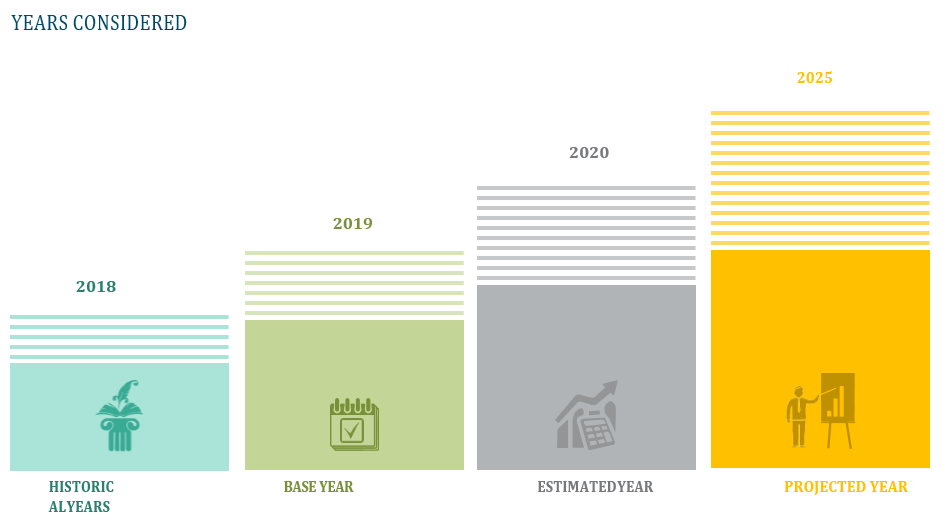OVERVIEW
The market for warehouse robotics is expected to grow between 2020 and 2025 at a CAGR of 10.93 per cent. The key drivers for the growth of the warehouse robotics market are the labor costs, the e-commerce industry, the need for efficient and reliable warehouse operations, active venture capital funding for start-up robotics companies, the the adoption of warehouse robotics by small and medium-sized enterprises (SMEs).








TABLE OF CONTENT
1 Global Warehouse Robotics Market
1.1 Study Objectives
1.2 Market Definition
1.3 Study Scope
1.3.1 Markets Covered
1.3.2 Geographic Scope
2 RESEARCH METHODOLOGY
2.1 Research Data
2.1.1 Secondary Data
2.1.1.1 Key Data From Secondary Sources
2.1.2 Primary Data
2.1.2.1 Key Data From Primary Sources
2.1.2.2 Key Industry Insights
2.1.2.3 Breakdown of Primaries
2.2 Market Size Estimation
2.2.1 Bottom-Up Approach
2.2.2 Top-Down Approach
2.3 Market Breakdown and Data Triangulation
2.4 Research Assumptions
3 Global Warehouse Robotics Market – Executive Summary
3.1 Market Revenue, Market Size and Key Trends by Company
3.2 Key Trends by type of Application
3.3 Key Trends segmented by Geography
4 Global Warehouse Robotics Market – Comparative Analysis
4.1 Product Benchmarking – Top 10 companies
4.2 Top 5 Financials Analysis
4.3 Market Value split by Top 10 companies
4.4 Patent Analysis – Top 10 companies
4.5 Pricing Analysis
5 Global Warehouse Robotics Market – Industry Market Entry Scenario
5.1 Regulatory Framework Overview
5.2 New Business and Ease of Doing business index
5.3 Case studies of successful ventures
5.4 Customer Analysis – Top 10 companies
6 Global Warehouse Robotics Market – Market Forces
6.1 Introduction
6.2 Market Dynamics
6.2.1 Drivers
6.2.2 Opportunities
6.2.3 Challenges
6.3 Porters Analysis of Market
6.3.1 Bargaining power of suppliers
6.3.2 Bargaining powers of customers
6.3.3 Threat of new entrants
6.3.4 Rivalry among existing players
6.3.5 Threat of substitutes
7 Global Warehouse Robotics Market – Strategic Analysis
7.1 Value Chain analysis
7.2 Product Life Cycle
7.3 Supplier and distributor analysis (Market share and product dealing strategies)
8 Global Warehouse Robotics Market – By Type (Market Size – & million/billion)
8.1 Mobile Robots
8.2 Articulated Robots
8.3 Cylindrical Robots
8.4 SCARA Robots
8.5 Parallel Robots
8.6 Cartesian Robots
9 Global Warehouse Robotics Market – By Software
9.1 Warehouse Management System
9.2 Warehouse Control System
9.3 Warehouse Execution System
10 Global Warehouse Robotics Market – By Function
10.1 Pick and Place
10.2 Palletizing and Depalletizing
10.3 Transportation
10.4 Packaging
11 Global Warehouse Robotics Market – By Industry
11.1 E-Commerce
11.2 Automotive
11.3 Electrical and Electronics
11.4 Metal and Machinery
11.5 Food and Beverages
11.6 Pharmaceuticals
11.7 Chemical, Rubber, and Plastic
11.8 Others
12 Global Warehouse Robotics Market – By Geography (Market Size – & million/billion)
12.1 Introduction
12.2 North America
12.2.1 US
12.2.2 Canada
12.2.3 Mexico
12.3 Europe
12.3.1 U.K
12.3.2 Germany
12.3.3 Italy
12.3.4 France
12.3.5 Spain
12.3.6 Rest of Europe
12.4 Asia-Pacific
12.4.1 China
12.4.2 Japan
12.4.3 India
12.4.4 South Korea
12.4.5 Rest of APAC
12.5 Rest of the World
12.5.1 South America
12.5.2 Middle East
12.5.3 Africa
13 Global Warehouse Robotics Market – Entropy
13.1 New product launches
13.2 M&A’s, collaborations, JVs and partnerships
14 Global Warehouse Robotics Market Company Profile (Key Players)
14.1 Market Share, Company Revenue, Products, M&A, Developments
14.2 ABB Ltd.
14.3 Fanuc Corp.
14.4 Kuka AG
14.5 Yaskawa Electric Corp.
14.6 Omron Corp. (Adept Technology, Inc.)
14.7 ATS Automation Tooling Systems, Inc.
14.8 Honeywell International, Inc. (Intelligrated)
14.9 Amazon.Com, Inc. (Amazon Robotics)
14.10 Fetch Robotics, Inc.
14.11 IAM Robotics
14.12 Company 11 & more
15 Global Warehouse Robotics Market – Appendix
15.1 Sources
15.2 Abbreviations










